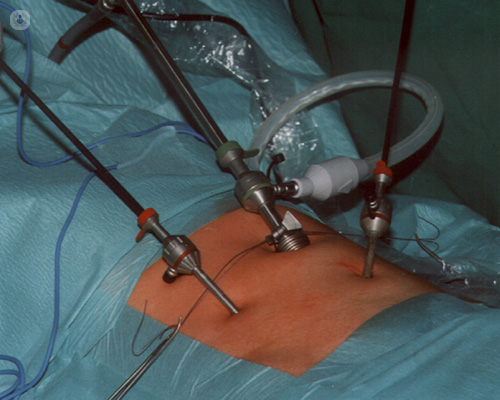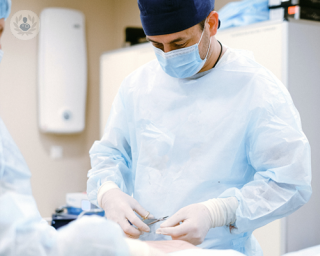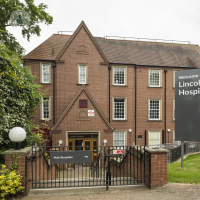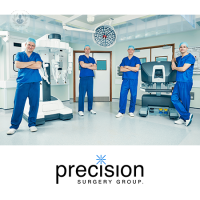Laparoscopic hernia surgery
Professor Khurshid Akhtar - Surgery
Created on: 06-07-2018
Updated on: 10-02-2023
Edited by: Sophie Kennedy
What is laparoscopic hernia surgery?
Laparoscopic hernia repair is a minimally-invasive surgery performed with general anaesthesia. A laparoscope is a flexible, thin instrument with a light source and camera on the end. It is inserted through small incisions made in the abdomen, depending on where the hernia is. The surgeon is then able to use this camera to guide the surgical repair.

Why is it done?
Laparoscopic hernia surgery is less invasive than open surgery and leaves just three small scars instead of one large one. As a result, there is less pain following surgery and a quicker recovery period. Patients are able to return to normal activities sooner than after having open hernia repair surgery.
What does it involve?
During laparoscopic hernia surgery, the abdomen is inflated with carbon dioxide gas to allow a better view for the surgeon. The surgeon performs the repair of the hernia using stitches and synthetic mesh which provide reinforcement of the abdominal walls. Once repaired, the small incisions are closed with stitches or surgical tape. These stitches will dissolve over time and do not require later removal.
How do you prepare for laparoscopic hernia surgery?
Before laparoscopic hernia surgery is recommended by your specialist, you will have had a thorough physical examination, an MRI scan and an ECG to assess your cardiac health. You will also be given general anaesthesia for this surgery and you won’t feel anything during the procedure. As such, food, drink and certain medications will have to be stopped for a certain period before the operation.
Aftercare
After laparoscopic hernia surgery, patients can normally return home the same day, providing they are not experiencing a lot of pain, nausea or vomiting. You can expect to be a bit sore for the first couple of days after surgery, but this can be managed with rest and painkillers.
You should be able to walk around after surgery, working up to more strenuous activity slowly over the following two weeks. It is important to eat high-fibre foods during recovery to avoid constipation and straining on the toilet.
Alternatives to this treatment
Hernias may also be repaired using open surgery or robotic repair surgery. Open surgery involves a larger incision being made to access the site of the hernia. The hernia is then pushed back into the correct position, reinforced with either stitches or synthetic mesh. Robotic repair is also performed laparoscopically, but the surgeons sits at a special console where they control the movements of the surgical instruments from this console.















